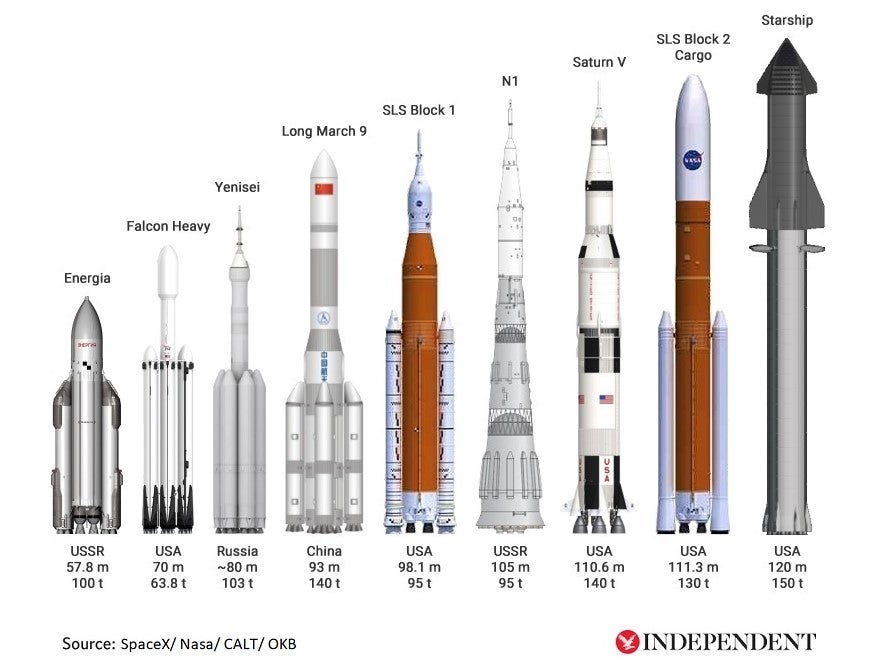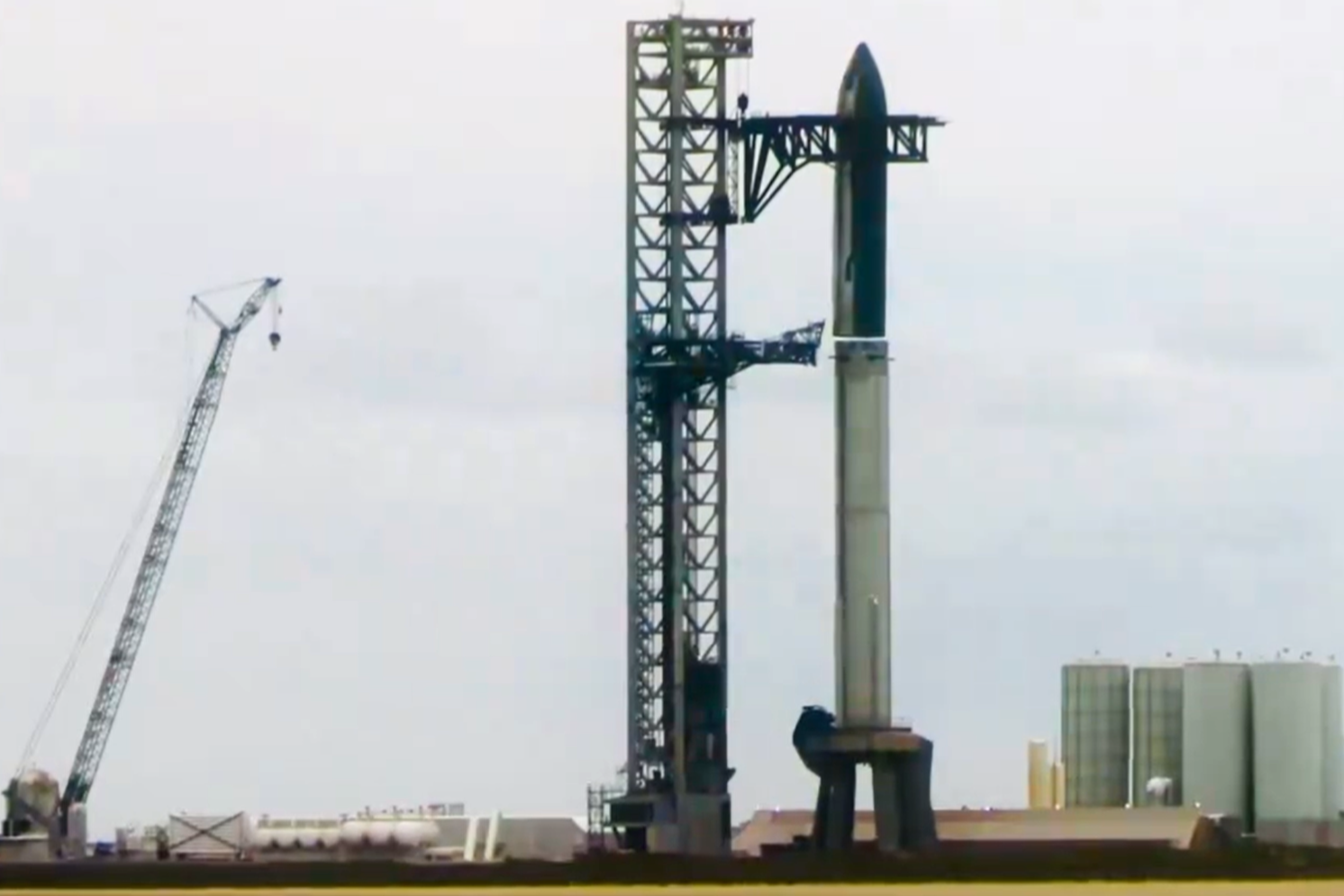Starship will be bigger than the Great Pyramids, Elon Musk says
The biggest rocket ever built is expected to launch later this month
Your support helps us to tell the story
This election is still a dead heat, according to most polls. In a fight with such wafer-thin margins, we need reporters on the ground talking to the people Trump and Harris are courting. Your support allows us to keep sending journalists to the story.
The Independent is trusted by 27 million Americans from across the entire political spectrum every month. Unlike many other quality news outlets, we choose not to lock you out of our reporting and analysis with paywalls. But quality journalism must still be paid for.
Help us keep bring these critical stories to light. Your support makes all the difference.
The next generation of SpaceX’s Starship rockets will be taller than the Great Pyramids of Giza, Elon Musk has said.
The SpaceX boss is currently preparing for the next Starship test flight, which is set to take place this month, but is already looking ahead to future versions of the craft that he hopes will one day transport people to Mars.
In March, SpaceX delivered an uncrewed Starship rocket to orbit for the first time, however the craft did not survive reentry into the Earth’s atmosphere.
Measuring 120 metres tall, Starship is the biggest and most powerful rocket ever built, capable of producing 7.5 million kilograms of thrust – roughly double that of the world’s second most powerful rocket, Nasa’s Space Launch System (SLS).

Responding to a post to X (formerly Twitter) on Sunday, Mr Musk wrote that Starship “will probably approach ~140m (currently ~120m) over time”.
For comparison, the Great Pyramid of Giza – the largest Egyptian pyramid – stands at 137m. The measurement also matches the recently broken record for the world’s longest baguette.
SpaceX has already secured multi-billion dollar contacts with Nasa to use Starship to transport crew and cargo to the Moon as part of the US space agency’s Artemis program, however Mr Musk has even bigger ambitions for the rocket.
The tech billionaire has frequently spoken of his desire to establish a permanent human colony on Mars in his lifetime, which he hopes to achieve before 2050.
To succeed, Mr Musk has plans to build a fleet of hundreds of Starship rockets, each capable of rapid reuse after launching.
At its current size, Starship can carry a payload of roughly 150 tonnes, according to SpaceX, while its internal volume provides enough space for up to 100 passengers.
Mr Musk did not provide specifics about whether the extra height will be added to the Super Heavy booster or the second stage craft, though an extra 20m will likely provide additional payload capacity, as well as the ability to travel further.

Mr Musk revealed that the most significant obstacle that remains for Starship is the heat shields that cover the rocket. Onboard cameras during the last orbital flight test showed heat shields falling off the craft during reentry into Earth’s atmosphere.
“A super reliable, light, reusable heat shield is the biggest technical challenge remaining for Starship,” he wrote on X on Sunday. “It needs to be able to take the heat.”

Join our commenting forum
Join thought-provoking conversations, follow other Independent readers and see their replies
Comments